
Kosmoseelupaik võib sisaldada palju erinevaid elemente. Tulevased astronaudid vajavad juurdepääsu toidule, veele, hingatavale õhule, magamisele, elektrile, töökohtadele ja palju muud. Siin on mõned näited elementidest, mis võiksid olla osa teie kosmose-eluruumist.
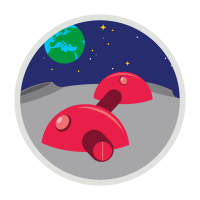
Astronautide koht, kus nad saavad magada, töötada, treenida ja otsida kaitset. See on astronautide kodubaas.
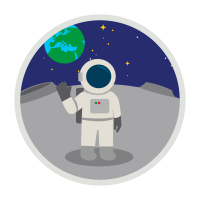
Selleks, et astronaut saaks kodubaasist ohutult lahkuda, vajab ta kosmoseriietust, mis kaitseb teda kosmose keerulise keskkonna eest.
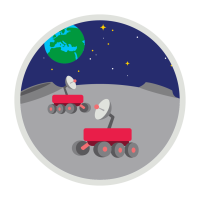
Rovers ja muud robotid võivad aidata astronautidel tööülesandeid täita või astronaute ohutult teistesse kohtadesse transportida, vältides samal ajal takistusi.
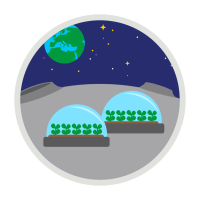
Astronaudid vajavad toitu ja hapnikku. Bioregeneratiivsete meetodite, näiteks hüdropoonika abil saavad astronaudid kasvatada toitu ja toota hapnikku.
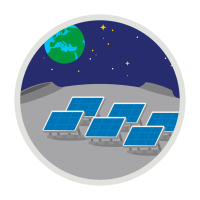
Kosmoseelupaik sõltub energiast paljude erinevate aspektide jaoks, näiteks masinate, keskkonnakontrolli, kommunikatsiooni ja palju muud.
Inimese kosmoseuuringud on erakordne väljakutse. Inimene ei ole loomu poolest sobiv kosmoses valitsevateks rasketeks tingimusteks. Iga kord, kui astronaudid ja kosmoseaparaadid väljuvad Maa õhukesest kaitsvast atmosfäärist, on nad avatud:
Kosmoses võib temperatuur varieeruda mitmesajast või isegi tuhandetest kraadidest kuni peaaegu absoluutse nullini.
Maa magnetosfäärist kaugel asuvatel astronautidel võib olla märkimisväärne kiirgushaiguse oht
Maal peame muretsema ainult suurte meteoriitide kokkupõrgete pärast. Kosmoses võib isegi kõige väiksem prahi avaldada katastroofilist mõju.
Kosmoses ellujäämiseks on astronautide jaoks ülioluline, et nende keskkond simuleeriks Maa atmosfääri tingimusi.
Kuu on meie lähim naaber ja loomulik sihtmärk inimbaasi rajamiseks. Kuu on Päikesesüsteemi ajaloo aardelaegas ja sellel on suur teaduslik potentsiaal kaugemale vaatamiseks, näiteks raadioteleskoobi ehitamiseks kaugemal, mis pakub Maalt tulevate pidevate raadiosaadete eest kaitstud vaateid meie Universumisse. Asetage oma baas Kuule või minge sügavamale Päikesesüsteemi.
Pinnatemperatuur: -233°C kuni 123°C
Atmosfäärirõhk: 10-7 Pa
Atmosfääri koostis: Kõhn atmosfäär, sealhulgas: heelium, argoon, naatrium, vesinik.
Kiirgus: Kõrge
Magnetväli?: Ei
Gravitatsiooni kiirendus: 1,6 ms-2
Lisateave: Kuu peal ei saa olla vedelat vett. Kuid arvatakse, et Kuu poolustel asuvates püsivalt varjatud kraatrites võib leiduda veejää, mis võib olla lõksus Kuu pinna all.
Pinnatemperatuur: -153°C kuni 20°C
Atmosfäärirõhk: 600 Pa
Atmosfääri koostis: Süsinikdioksiid, lämmastik, argoon
Kiirgus: Kõrge
Magnetväli?: Ei
Gravitatsiooni kiirendus: 3,7 ms-2
Lisateave: on poolustel vesijää ning lõunapolaaralal on avastatud jää- ja tolmukihi all vedelat vett sisaldav tiik.
Pinnatemperatuur: -180°C kuni 430°C
Atmosfäärirõhk: 10-7 Pa
Atmosfääri koostis: Kitsas atmosfäär, sealhulgas: vesinik, heelium, hapnik, veeaur.
Kiirgus: Kõrge
Magnetväli?: Jah
Gravitatsiooni kiirendus: 3,7 ms-2
Lisateave: Vaatamata kõrgetele temperatuuridele, mis planeedil päeval valitsevad, võib sügavale kraatrite sisemusse selle poolustel olla piisavalt külm, et seal võiks olla vesijääd.
Pinnatemperatuur: 470°C
Atmosfäärirõhk: 9,3 MPa
Atmosfääri koostis: Süsinikdioksiid, lämmastik
Kiirgus: Madal
Magnetväli?: Ei
Gravitatsiooni kiirendus: 8,87 ms-2
Lisateave: On mürgine ja raske atmosfäär, mis koosneb peaaegu täielikult süsinikdioksiidist. Planeeti ümbritseb paks pilvekiht, mille ülemine osa koosneb peamiselt pisikestest väävelhappe tilkadest. Pinnal on Veenuse atmosfäärirõhk üle 90 korra suurem kui Maal.
Pinnatemperatuur: -179°C
Atmosfäärirõhk: 146,7 Pa
Atmosfääri koostis: Lämmastik, metaan
Kiirgus: Madal
Magnetväli?: Ei
Gravitatsiooni kiirendus: 1,35 ms-2
Lisateave: On pilved, vihmad, jõed, järved ja mered vedelaid süsivesinikke, nagu metaan ja etaan.
Pinnatemperatuur: -201°C
Atmosfäärirõhk: –
Atmosfääri koostis: –
Kiirgus: Kõrge
Magnetväli?: Ei
Gravitatsiooni kiirendus: 0,113 ms-2
Lisateave: Arvatakse, et seal on hüdrotermilised luugid, mis paiskavad mineraaliderikast vett ookeani, mis asub selle jäise pinna all.
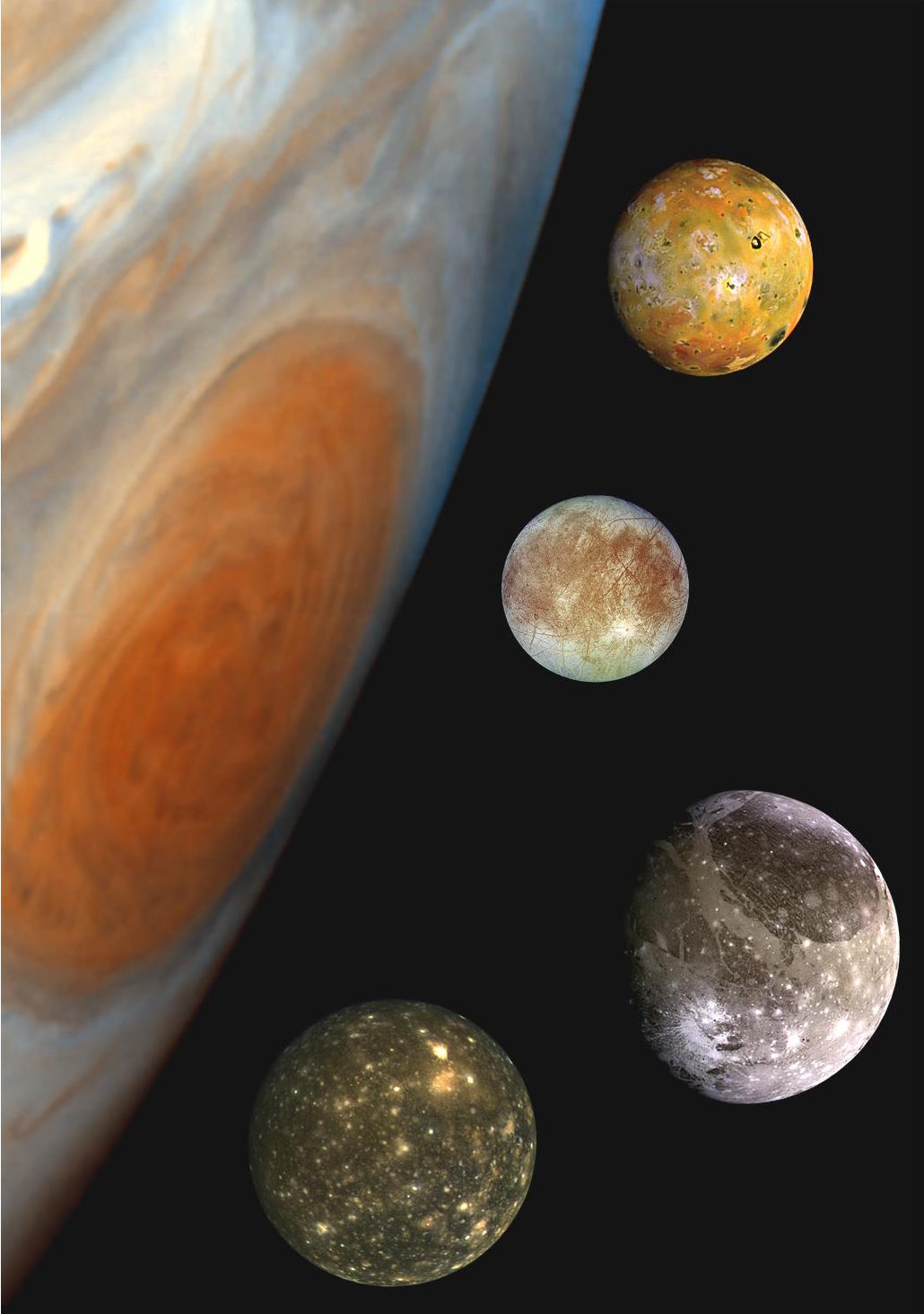
See "perekonnaportree" näitab Jupiteri, sealhulgas selle suure punase laigu ja nelja suurima kuu kujutiste komposiiti. Ülalt alla on kujutatud Io, Europa, Ganymedeus ja Callisto. Europa on peaaegu sama suur kui Maa kuu, samas kui Ganymedos, Päikesesüsteemi suurim kuu, on suurem kui planeet Merkuur.
Kui Io on vulkaaniliselt aktiivne maailm, siis Europa, Ganymedos ja Callisto on jäised ja nende kooriku all võivad olla ookeanid, mis sisaldavad vedelat vett. Eriti Europa võib sisaldada isegi elamiskõlblikku keskkonda.
Pinnatemperatuur: -223°C kuni -108°C
Atmosfääri koostis: Io atmosfäär on õhuke vääveldioksiidi atmosfäär, Callistol on väga õhuke süsinikdioksiidi atmosfäär, nii Europa kui ka Ganymed on õhukese hapniku atmosfääriga.
Kiirgus: Kõrge
Magnetväli?: Ganymedes on ainus magnetväljaga kuu Päikesesüsteemis.
Gravitatsiooni kiirendus: 1,2 kuni 1,8 ms-2
Näited kosmosesõidukitest, mida kasutatakse astronautide ja lasti transportimiseks madalale Maa orbiidile ja Kuule.
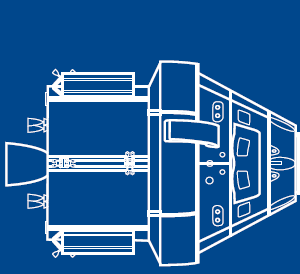
Orion on NASA järgmine kosmoselaev, mis saadab inimesi sügavale kosmosesse. Selle eesmärk on saata astronaudid kaugemale kosmosesse kui kunagi varem, kaugemale Kuust ja asteroididele. ESA on projekteerinud Euroopa teenindusmooduli (ESM), mis on kosmosesõiduki õhu-, elektri- ja jõuallikaga varustav osa, ning juhib selle arendamist.
Viis automatiseeritud transpordivahendit toimetasid aastatel 2008-2015 rahvusvahelisse kosmosejaama rohkem kui 31 500 kg varusid. Nad tõstsid jaama orbiidi tõstmiseks mitu korda ja viidi seda samamoodi kosmoseprügi eest eemale.
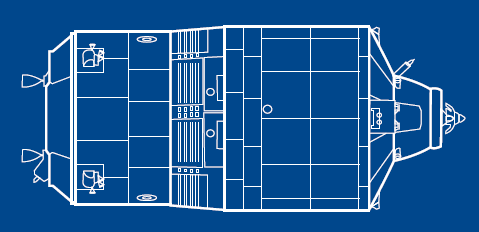

Apollo kosmoselaev viis esimesed inimesed Kuule üle 50 aasta tagasi. Täielik Kuu maandumismissiooni konfiguratsioon koosnes Apollo juhtimis- ja teenindusmoodulitest ning Kuumoodulist. Komandomoodul oli meeskonnale mõeldud ja teenindusmoodul andis tõuke Kuu orbiidile sisenemiseks ja Maale tagasipöördumiseks.